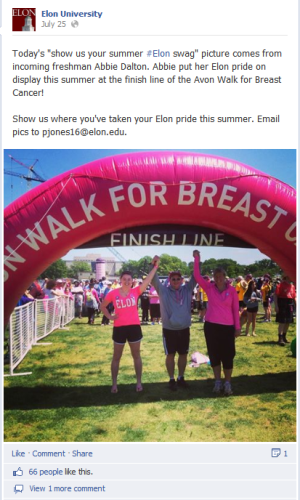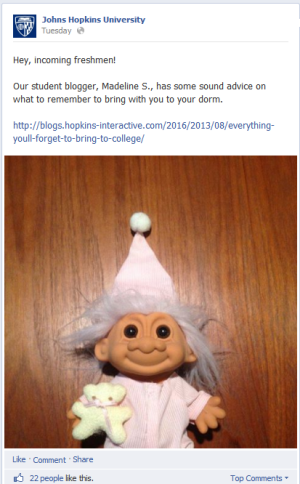Three Ways Universities Achieve Social Media Success
With nearly 100 percent of college-bound students active on one social media platform or another, higher education has their target audience in the palm of their hand. Are you doing everything that you can to engage with your audience?
Having recently been through the college search process myself, I’m eager to share a few things that I found especially valuable from great college social media pages.
While there is no exact recipe for social media success in the college recruiting process, here are three ways to set your institution apart from the competition.
Share campus news and events
The most effective pages I visited throughout my search process steered clear of stereotypical photos of a pristine campus and awkward student  pictures. To effectively engage potential students via social media, schools like Harvard University start by asking and answering key questions:
pictures. To effectively engage potential students via social media, schools like Harvard University start by asking and answering key questions:
- What kinds of events take place on campus?
- What types of headlines is the school making in local newspapers?
- What is it like to live in the school’s city or area?
- Why do students thrive here?
These are the types of questions you need to answer for prospective students. Show your audience a dynamic and lively campus that accommodates and is receptive to everyone. In this day and age, ‘perfect’ is no longer interesting (or believable). Prospective students aren’t interested in flawlessness; they want to see how each institution addresses community issues, and they want to get a feel for how well the community matches their lifestyle.
Be a storyteller
 You have a story to tell and social platforms are the ideal place to share it. Don’t be shy about sharing your school’s values. What makes your community tick? Prospective students see right through artificial posts and marketing hype. Share pictures and info that your audience hasn’t seen before, like original campus pictures or early newspaper articles. You are marketing to students who have a life and personal story. Show these students how your institution is a living, breathing establishment with an equally interesting story, such as Elon University’s posts.
You have a story to tell and social platforms are the ideal place to share it. Don’t be shy about sharing your school’s values. What makes your community tick? Prospective students see right through artificial posts and marketing hype. Share pictures and info that your audience hasn’t seen before, like original campus pictures or early newspaper articles. You are marketing to students who have a life and personal story. Show these students how your institution is a living, breathing establishment with an equally interesting story, such as Elon University’s posts.
Offer extra information
Prospective students are looking for as much information as they can gather about each school. In a recent EVG study of 900 18-20 year olds, 57 percent of students used social media in their college search process. Almost 90 percent of the respondents used Facebook. This is a tremendous opportunity to reach a wider audience, but not if your Facebook content is a replica of your website. Smart schools like Johns  Hopkins University offer helpful links and incentives for following or ‘liking’ your page by way of extended deadlines or reduced application fees. These schools also take advantage of the opportunity to directly answer questions and generate conversation. It’s the perfect chance to actively engage with your target audience.
Hopkins University offer helpful links and incentives for following or ‘liking’ your page by way of extended deadlines or reduced application fees. These schools also take advantage of the opportunity to directly answer questions and generate conversation. It’s the perfect chance to actively engage with your target audience.
Bottom line
Social media offers what official websites and brochures cannot: a personal connection with the institution. With social media, your target audience has the chance to engage with you 24 / 7. It’s not enough to post conventional pictures and links to expected articles; students expect to connect on a more personal level through social media. If you show and tell the story behind your school, you’ll have an engaged audience coming back for more.
To get more ideas about what the top 100 schools on social media are doing, check out Student Advisor’s Top 100 Social Media Colleges.
Sarah Bowen – Digital Media Intern



